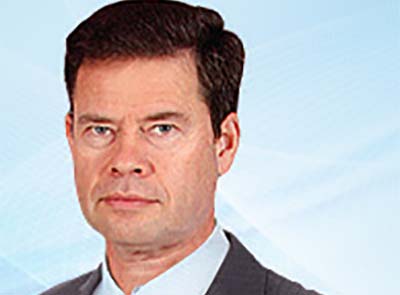Kathy Gibson reports from SATNAC in George – The Internet of Things (IoT) is the buzzword of the day, and organisations around the world are rushing to get a foothold in this disruptive new world. But IoT raises massive issues that could prove damaging to companies and countries alike.
Dr Brian Armstrong, chief operating officer of Telkom Business, cautions that organisations need to approach IoT thoughtfully to avoid becoming a victim to the many pitfalls that it could hold.
The predictions of up to 30-billion devices connected to the IoT within the next few years, and the value thus created make IoT an extremely attractive proposition.
Throughout history, he points out, we have seen a steady separation of IP or intelligence from the product or the process. The economic determinants of labour, material, machinery, capital and land have become marginalised as competitive differentiators.
“Now, the co-ordination and use of the IP or embedded intelligence of the product versus its physical construction is taking greater importance. So IoT technologies will be the key enabler of the collection, creation and co-ordination of the product’s IP.”
IoT is also a key means of co-ordination of the products and potentially even for the design of these products, Armstrong adds.
“So the potential for disruption and huge market change is indeed very large.”
Driving the ascendance of IoT is the confluence of five key trends, he says.
Computing power is the first, where Moore’s Law has held true for years and continues to drive forward.
The second is miniaturisation, not only of the chip but of complete products.
Sensors are the third trend, appearing everywhere from appliances to clothing, to literally everything and they are connected all the time.
Connectivity is arguably the most important trend. Armstrong points out that the more things are connected to an ecosystem, the power and value of the ecosystem is squared by the addition of each new thing.
The data that is thus generated can be staggering, so intelligence – the fifth trend – is key to unlocking the real value.
“If we do it right, I believe this can transform South Africa in many ways,” Armstrong says. “Think of the major challenges: education healthcare, unemployment – it has the potential to add benefit.”
For citizens, IoT can offer personalised services, citizen empowerment and convenience. For governments, it can improve service delivery, collaborate on public policy and improve revenues. For enterprises, it can transform business models, enable innovation and improve market competitiveness.
“The people that grasp this earliest often gain immense value,” Armstrong points out.
However, the rise of platform businesses has introduced new socio-economic challenges, he adds.
Many new business have unsustainable growth models that aim for growth at all costs which leads to inflated expectations. “We end up with imperfect competition. We don’t have lots of leading social media players, you don’t have lots of taxi operators. Companies win the race to scale and then become globally dominant – but imperfect competition is not necessarily ideal.”
There is also a skills disruption that is happening. Semi-skilled IT jobs are in danger from computerisation and automation. “In South Africa this can be very damaging if we don’t manage it properly.”
Geographic decoupling means that while everything is connected, the intelligence is not. “When things are taking to other things there are no people involved for events to occur. There is potential for social fracture as we see a concentration of wealth not necessarily in our country or continent; and a skills disruption if we don’t actively focus on it.”
Armstrong believes that IoT presents a significant opportunity to take South African into the digital era the desired outcome is an ecosystem where everyone benefits
“We need to share in the prosperity that IoT offers, but we need to ensure that people don’t become marginalised – especially those on the wrong side of the digital divide.”

